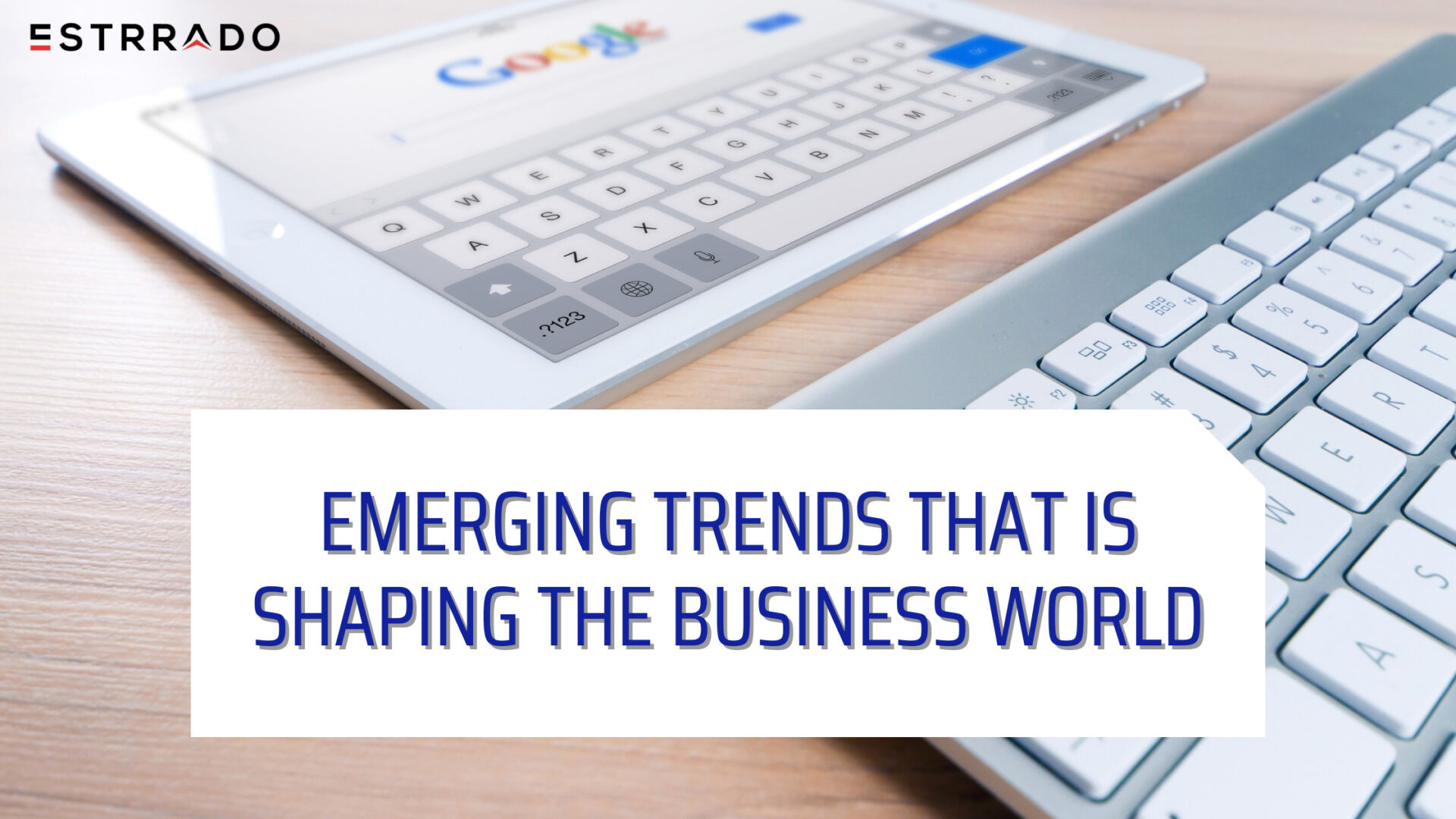The COVID-19 outbreak is now affecting every aspect of our lives, both personal and professional. Many are attempting to navigate through the intricacies of their businesses, which include people, supply-chain, financial, health, customer management, and so on. The globe is undergoing one of the most substantial transformations in the previous century. In the coming years, traditional firms will alter and new ones will arise. We are witnessing a rapid shift in which people are adapting to the pandemic in a seamless manner. Despite the fact that business operations and markets are changing, people will have a greater demand for healthcare, energy, water, emergency services, and other services?
People are looking for new ideas to help them develop new ways of living and working. Furthermore, businesses must remain vigilant and cautious of the pandemic’s potential influence on their operations. The coronavirus has infected over 15 million individuals worldwide and killed almost a million people. According to data, the pandemic may cost the economy anywhere from $5.8 million to $8.8 trillion. Many industries have been crippled by the crisis, while some are in the process of reviving. Let’s take a look at some of the trends that will influence cross-future industries.
De-Globalization
Covid-19 has a significant impact on globalization, prompting businesses to develop new supply chain management, purchasing, sourcing, and customer retention tactics. And, as a result of globalization, customers’ priorities have shifted in the business. The supply chain has been severely disrupted. The pandemic has caused major adjustments in many enterprises’ long-term supply chains, as well as a considerable financial toll on the majority of them.
Businesses now know how to develop new tactics and respond to market developments, such as by upgrading inventory or forming backup plans with existing or emerging suppliers. Whatever technique they choose, they’ll need real-time data and analytics to ensure supply chain robustness.
Reformation in public healthcare
The pandemic has caused a huge upheaval in the global healthcare industry. The COVID-19 has given the healthcare sector in the United States, the United Kingdom, France, and many developing countries a new platform. The healthcare business is anticipated to alter and provide more balanced care as a result of the reforms. The healthcare industry will be drastically reformed as a result of this.
Apart from that, firms will be required to make efforts in the area of individual healthcare. The need for emotional connectivity among the working class will grow as social distancing techniques and remote working become more popular around the world. To overcome the disadvantages of limited in-person human contact, companies will need to focus more on their employees’ mental health and well-being.
New ways of google searches
The epidemic has opened the door to new skill-based searches. People took a more proactive attitude to DIY with limited resources available because they were restricted to their houses. The number of consumers who used to handle their daily responsibilities at home, such as cooking, decorating, landscaping, grooming, and a variety of other activities, has increased. People began to have more free time as they began to look for entertainment, house styling, and social connections, among other things. During the pandemic, search keywords became increasingly popular, and this trend is predicted to continue. Here are a few examples of search terms:
- Searches for “knowledge,” such as “How to Make a Robot,” a popular search keyword in Nigeria.
- Searches for “inspiration/ideas,” such as “home gym ideas,” a popular phrase in Germany.
- Work-at-home searches, such as “comfortable office chair,” which is a popular term in France.
- Searches related to “well-being,” such as “virtual gym,” a popular term in Spain.
- “Community” searches, such as “games to play with friends,” which is a popular term in Spain.
- “Entertainment searches,” such as “online board games,” which is a popular French search word.
This trend will give digital marketers more opportunities to create optimized content for search items. Businesses’ online exposure can be enhanced by creating material that is tailored to users’ new post-pandemic search behavior, which will help them move forward.
AI (Artificial Intelligence) and ML(Machine learning)
The most widely discussed technology innovations nowadays are Artificial Intelligence (AI) and machine learning (ML). According to the Baun & Company report from 2019, nearly 90% of tech professionals believe these technologies will be integrated into their goods. AI and machine learning will aid enterprises as we move toward a data-driven world. Data is no longer piling up because everything is integrated with AI technology, which can assist in deciphering and analyzing data as well as delivering important insights for business progress. According to research, 14% of companies using AI were able to enhance sales and growth throughout the pandemic.
Acceleration of digital transformation
Many firms are now adjusting to the arrival of digital transformation. In the previous two years, they’ve been trying to restructure their company. COVID-19 has compelled businesses to take drastic measures to adapt to technological advances, as well as to modernize their culture, reform their organizational structures, and operational structures, among other things. Organizations must continue to operate in tandem with digitalization. To stay connected with clients, they must be prepared to accept risks, changes, and uncertainty. For firms seeking development, continuity, and productivity, digitalization will be a primary focus.
More attention towards e-learning
One of the industries that have been significantly impacted by the pandemic is education. The process of digital transformation is still ongoing in this industry. During the pandemic, most educational institutions were forced to adapt to an online mode in order to maintain social distance while maintaining the learning and teaching process. The new digital learning platforms have become part of the routine to both teachers and students. The value of e-learning is expected to increase by $24.23 billion by 2024.
To ensure high-quality information transfer, an increasing number of instructors are turning to digital alternatives. The Google Classroom tool has become popular in schools, allowing teachers to engage with students more easily online. Many websites have also been established to assist teachers in producing their own resources.
Rise on-demand workforce
Because of the pandemic’s influence on the economy, businesses and individuals have begun to embrace technology-enabled on-demand labor models and platforms. This will improve workforce planning, financial management, and access to a broad range of skills. Businesses must understand and learn how to engage and retain on-demand people through enhanced People Management Programs, strategies, and technologies in order to add value to their workforce.
Change in workplace definition
If the current remote working conditions are maintained, there may be a permanent shift in working habits. New norms for these working situations can be formed in order to redefine the work-life and personal-life boundaries. Unlike in the past, the workplace will no longer be an office. The working patterns will be altered much more. Workplaces will become collaborative hubs, rather than just places to work, so that common goals may be met. Unnecessary costs such as travel and hospital visits can be eliminated, allowing virtual engagement to take the place of traditional meetings.
Next gen databases
As a result of the epidemic, there has been an increase in the number of smart devices available to facilitate interconnection between people and devices. Databases have proven increasingly important for organizations since the outbreak. They provide tools for easier virus tracking among these. In this pandemic world, all companies want to save their critical data. There is a greater probability of data being accessed by hackers, posing a significant risk to businesses. Businesses have begun to develop data secure systems in order to avoid data breaches and to keep the working process running smoothly.
Change in work habits will lead to urban transformation
As the environment of business operations changes, the cost of commercial real estate will fail to keep pace with decreased demand. As remote working becomes more common, corporate complexes will become less necessary, and new opportunities for utilization will emerge. The pandemic has hastened the trend for commercial real estate to become more adaptive to many other trends, allowing industries to be reborn and reconsider their place in their diverse world.
Rapid innovations
Whatever obstacles arise, technology will continue to stimulate innovation across business models in numerous industries, allowing for the entry of new enterprises. In order to succeed, any firm must be aware of a changing environment and differentiate itself from the competitors. To generate a break-through value for customers, business leaders must be able to adapt to changes, think creatively, and welcome innovations. In the post-COVID-19 future, there will be a higher need for innovation. If firms do not adapt to new technological advancements, they may face an existential crisis.
Shift in consumer behavior
Google Trends is a Google service that assesses how popular search keywords are across different locations and languages in Google Search. Google concluded that some consumer behaviors have been accelerated as a result of the pandemic’s impact by analyzing thousands of Google trends retail search data points from 23 different countries spanning Europe, Africa, and the Middle East.
- Consumers are using the internet to do their window shopping.
- Customers are cautious about which brands they buy.
- Consumers anticipate a higher level of value than before.
- Customers demand high-quality delivery services.
- There is a dynamic demand structure that consumers follow.
To succeed in the market, businesses must adapt to shifting customer demands. Customers must be able to easily browse, acquire, and receive products and services from businesses. The pandemic has brought to light the altering customer behavioral trends, allowing businesses to grow.
As the pandemic gradually disrupts every industry, it’s critical for businesses to consider the overlapping patterns that could help economies get back on track. You may keep in touch with your customers in the business world by keeping an eye on new market trends and the trends that your competitors follow. There’s no need to be concerned; instead, concentrate on the future. You can try out new techniques while also remaining open to new ideas that could save your company and economy from collapse. Future-focused organizations have already begun to embrace new technological advancements, and you should do the same.








